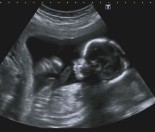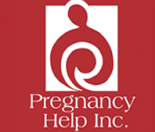The 3 trimesters of pregnancy – the amazing experience of carrying and growing a new life inside your body. What is happening in each of the 3 trimesters during pregnancy?
How long does pregnancy last?
The average length is 280 days (or 9 months and 1 week, or 40 weeks) starting from the first day of your last menstrual period (LMP) to the birth of the baby. This is only an average – most babies are born between 38 – 42 weeks.
Why do we use the LMP to date a pregnancy?
It is the only sure date we have, as women ovulate and conceive at different times in their menstrual cycle. The average woman, however, ovulates 14 days before her next period is due. Midwives and doctors will use your LMP date and the average length of your cycle (usually 28 days) to ascertain your Estimated Date of Delivery (EDD). They will add 9 months and 7 days to your LMP date and then adjust your due date according to the length of your cycle, if it is particularly long or short.
For example, if your LMP was 3rd January and your average menstrual cycle is 35 days: add 9 months and 7 days (10th October), plus a further 7 days to take your long menstrual cycle into account – your EDD is 17th October.
How do you know you are pregnant?
The first sign is usually that your period is late. For some women they feel immediately different – they may feel tired and/or sick, or their breasts feel tingly and swollen.
Pregnancy can be confirmed by a simple urine test that can be purchased at your local chemist (approximate cost $20) that will detect human chorionic gonadotrophin (HCG), a hormone of pregnancy. A negative test does not always mean you are not pregnant – if your period does not arrive in a few days, repeat the test. A positive test is 99% accurate.
The three trimesters of pregnancy
Pregnancy is divided into 3 phases or trimesters of 3 months each. The 1st trimester takes you to 12-14 weeks gestation, the 2nd trimester up to 28 weeks gestation, and the 3rd trimester finishes with the birth of your baby.
First trimester of pregnancy
This 3 month period begins before you have actually conceived your baby (which is known as an embryo for the first 8 weeks). It begins with your last menstrual period and includes conception, which will usually occur 14 days later and the time of your missed menstrual period. By now the embryo has already embedded in the lining of your womb (or uterus) and over the next few weeks it grows rapidly (hence why mum is so tired); the heart and nervous system will begin to form and limb buds will appear.
By the time you have missed your second period, facial features are beginning to develop and the baby is starting to move.
At the end of this trimester the baby is moving freely, although mum cannot feel this yet, the circulation and the kidneys are working and the baby is sucking and swallowing!
How is mum feeling!?
- Usually overwhelmingly tired, although some people have not realized they are pregnant yet! For a lot of new mums it feels as though “someone has pulled their plug out!”
- Some people feel faint when standing for periods of time – this is due to circulation changes and can be prevented by wearing support tights and walking around regularly.
- A lot of women feel nauseous at this time and many will vomit particularly early morning or when they have an empty stomach.
- Breasts feel larger and can be tender or even painful.
- Due to baby’s position in your pelvis you will probably be going to the toilet for a wee little and often.
- As well as coping with these physical changes, this is a period of great adjustment to the reality of being pregnant and the joys and fears that this brings.
Second trimester of pregnancy
By now you are 12-14 weeks pregnant and some women have already seen their baby on a scan and most will be ‘showing’ a bit as the growing baby moves out of your pelvis and the jeans become tighter!
This is a period of rapid growth for your baby – the skeleton is developing and the tiny baby even has finger nails. Sometime in this trimester the mum will feel the baby moving for the first time – this initially feels like a flutter, or like wind. The feeling becomes more regular and within a few weeks your baby develops a pattern of waking and sleeping and the movements are clearly felt. By the end of the second trimester (28 weeks) your baby is usually capable of surviving if it is born – most of the body’s organs are functioning and the baby is practising breathing movements.
How is mum feeling now?
- Usually a lot better, although for some the nausea and vomiting does not abate until well through this trimester, if at all.
- The breasts are now producing colostrum (the baby’s first milk) and by the end of this trimester the pregnancy is visible to all. Many women ‘bloom’ at this time as they become less tired and the anxieties that the couple may have had in early pregnancy are resolving, as the baby grows and they become accustomed to the idea of the new arrival.
Third trimester of pregnancy
The last 3 months of pregnancy is a period of growth for the baby as it builds fat stores, ready for the birth. Hair and nails are growing too and the skin of the baby looks less wrinkled. The tiny body looks more rounded, and the lungs are developing and preparing for the birth and the outside world.
The baby will have established a sleep and waking cycle and mum will be aware of periods of activity during the day and night! Your baby’s movements are the best sign that he is getting well fed (just like a toddler), so your health professional will be forever asking you about ‘fetal movements’.
How is mum feeling before the birth?
For lots of women the feelings of tiredness return as the baby gets big and cumbersome to be carrying around. Some are also feeling anxious about the birth of their baby and many couples may be worried about impending parenthood.
The feeling of needing to go to the toilet all the time returns as baby’s head settles into the pelvis. Heartburn can also be unpleasant for some, as the stomach is squashed by the baby and the pregnancy hormones allow a lot of reflux after eating meals.
There is increased pressure on all of mum’s body systems and it is common to feel breathless on exertion (it is worth mentioning this to your midwife – it is possible that you are anaemic – ie. short of iron). Some women get backache and pain in the pelvis at this time, due to softening of the ligaments that support your muscles. This can be prevented by good posture and careful moving and lifting of toddlers. Keeping up gentle exercise, such as walking/swimming will help lessen the discomfort of late pregnancy as it aids the circulation, reducing the risk of getting swollen veins (varicose veins) in the legs or haemorroids around the back passage.
Your breasts may leek colostrum, in preparation for feeding your baby and will certainly be feeling large due to growth of the milk glands.
Stretch marks can occur at this time of rapid growth of your abdomen – softening the skin with oil / lotions may reduce these; remember they will fade after the birth.
Despite all these possible physical discomforts this is a period of great excitement and planning, as the birth of your baby is imminent.
Your midwife and doctor will be seeing you regularly to ensure the on-going health of you and your baby and giving you the opportunity to ask questions that are concerning you.
Useful Pregnancy Websites
www.midwife.org.nz/index.cfm/midwifeservices
This link gives information about services that midwives provide during the trimesters of pregnancy
For information on Nutrition in Pregnancy or Choosing an LMC follow these links to the Kiwi Families articles.






